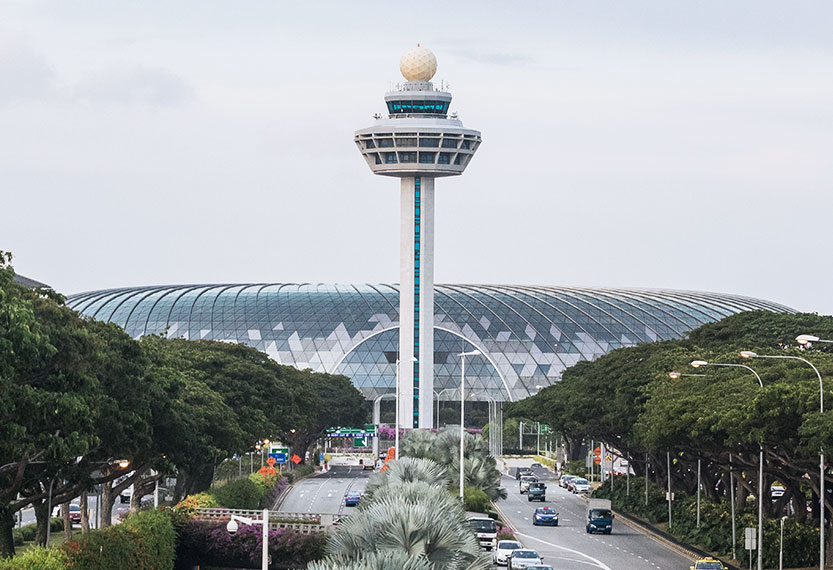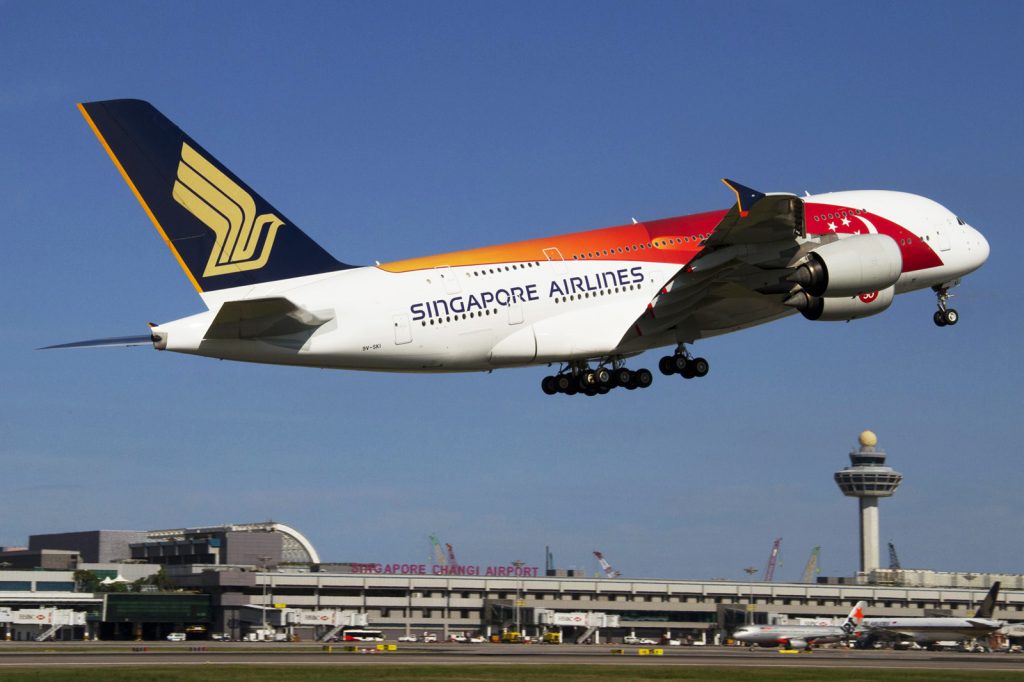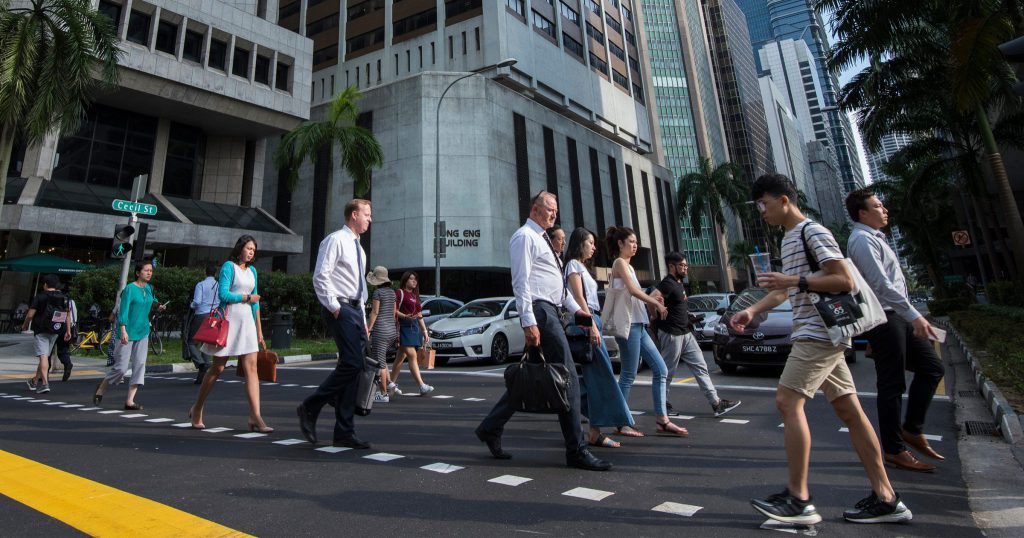Talking about how a particular airline may benefit from a global pandemic that brought air travel to a standstill, forcing carriers to swallow huge losses, cut their fleets and staff, in the hopes of staving off bankruptcy may sound paradoxical, ridiculous even, in the current situation.
Yet, we should heed the advice of Warren Buffett when he recommended to “be fearful when others are greedy, and greedy when others are fearful.”
Today, the world of aviation is indeed gripped by fear and only one company has the confidence to become “greedy” and position itself to reap the most from the incoming recovery: Singapore Airlines (SIA).
Pressure makes diamonds
Global airline industry has experienced massive, uninterrupted growth in the past decades — not even the financial crisis of 2008/09 was able to make a dent in it.
Within 15 years before the pandemic, the number of passengers has more than doubled to over 4.5 billion, from just under two billion in 2004.
The problem with growing markets however, is that good conditions attract many players as everybody wants a slice of the ever-growing pie. But as in every domain in life, only a few can really excel.
This leads to over-investment and mismanagement, particularly by companies not necessarily well-suited to be in the business in the first place. But because the industry keeps growing, it’s easy to justify both borrowing as well as, in many cases, public spending, using taxpayers’ dollars.
As a result, many air carriers — particularly national ones that count on government support — tend to underperform and operate at a loss, even if the industry is growing.
Hence crises, however painful, are often also necessary to prove who is best suited for survival and weed out the weak. COVID-19 has created such an opportunity.
All of a sudden, companies that have been generously kept afloat by public money simply cannot be saved in their current form.
The financial outlay would be far too large, particularly in the face of billions of dollars needed to keep entire economies from collapsing. In this situation, having a flagship airline carrier becomes the last of your concerns.
Unlike its regional counterparts — particularly Thai Airways, Malaysia Airlines, Indonesia’s Garuda, or even Hong Kong’s Cathay — SIA has not only been among the world’s best, but also profitable international carriers.
Despite pressure from premium Persian Gulf airlines (financed by limitless oil money) and numerous low-cost airlines like AirAsia, the company has held its own turning reliable profits for years.

Today, it is hurting too; but years of efficient operations and current support from Singapore’s government and Temasek Holdings are helping it take advantage of the COVID-19 disaster that is crushing everyone else.
A massive US$16 billion (S$21.63 billion) it has raised thus far with the help of Temasek not only allows it to continue to operate (even if at a loss) until the pandemic is in retreat, but is also used to make investments, while everybody else is just hoping to survive.
Of course, Temasek itself is seeing interest not only in the airlines’ survival, but in their subsequent rebound and growth that is going to boost its shareholder returns in the years to come.
What doesn’t kill you makes you stronger
Unlike for most other carriers, cuts of 20 per cent of the staff were the only bitter pill the company needed to swallow last year.
No more reductions are planned, while the company is actually expanding and modernising its fleet to improve its fuel efficiency, preparing it for the inevitable rebound in the business that is about to happen in the coming years.
Old planes are being retired early and new orders are being taken. SilkAir has been folded into SIA, while Scoot has just presented its new machines delivered by Airbus.

What is a painful period for SIA, is very nearly a death blow to its immediate rivals.
Thai Airways, Malaysia Airlines and Garuda Indonesia have all entered into agreements with creditors on restructuring and reductions to ensure some form of survival in the future.
Garuda is expected to cut its fleet by half by the end of 2022. Thai Airways is planning reductions from 103 to 86 planes by 2025, while cutting employment by over 50 per cent.
Meanwhile, Malaysia Airlines is looking to retire all of its flagship A380s, potentially looking for deeper cuts as the airline suffered badly long before the pandemic.
With competitors struggling, shrinking their fleets and retrenching people, SIA is taking the pole position to make the most of the air traffic revival after the gloom of the COVID-19 winter.
When passengers are ready to fly again, SIA will have more and better planes — both in the premium segment, as well as with its budget-carrier Scoot. It’s going to boast leaner, more modern and efficient operations, than any other airline in the region.
This in turn, is not only going to boost its standing, revenues, profits and share of the market, but also contribute to Singapore’s growing importance as an air hub for Southeast Asia, as well as a link between Europe and the Antipodes.

Changi Airport is also using the COVID-19 downtime to accelerate the renovation of Terminal 2, while working on the massive Terminal 5, which is set to take the airport’s capacity north of 130 million passengers per year once it opens in the 2030s (albeit with some delay due to uncertainties the pandemic has caused right now).
With a stronger national airline, better fleet, more connections, Changi Airport is going to gain new advantages and strengthen its position as a dominant air travel hub in Southeast Asia.
Nevertheless, the timeline of the recovery remains uncertain. It may take a few years before all restrictions are gone and we’re back to business as usual.
However, the situation is not only bound to return to normal eventually, but also improve thereafter.
The money spent on keeping SIA in top shape now is bound to pay off when the revival happens. Since it’s not an excessive burden to taxpayers or state investor Temasek, it’s probably one of the best investments anybody can make right now.
Featured Image Credit: Asianaviation.com











